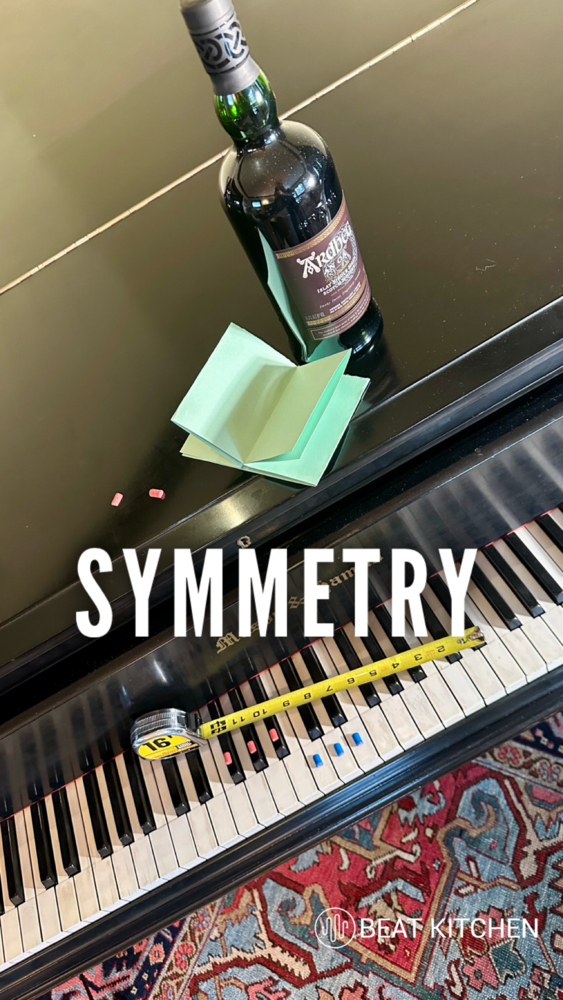When you play most chords, what you’re getting is a blend. It’s like a Cabernet Chiraz or a blended scotch. That’s because most chords are made up of a variety of interval types, like major thirds and minor thirds.
But use one kind of grape or a single malt scotch, and what you’ve got is some musical symmetry. It’s a result of what happens when you evenly divide the 12 half steps that live within the octave. Case in point, a major third.
It’s made of four half steps, which goes into 12 three times. This is an augmented chord, and if I repeat the interval again, I end up at the same note that I started. So where a typical chord has both major and minor intervals, it’s a little bit like folding up a piece of paper haphazardly.
The corners don’t line up. But with identical intervals, they do. So what we end up with is a limited number of chords that repeat themselves.
The result is the C augmented chord is the same as the E augmented chord and the G sharp. There are only four of them, because by the time you get back to E, you’re right where you started again. The same holds true for diminished chords.
Three half steps into minor third. Three goes into 12 four times, so there are only three of these. Two semitones goes into 12 six times, and this gives you the incredibly symmetrical whole tone scale.
There are only two of those. And it gets ridiculous, because there’s symmetry everywhere. There’s six tritons and 12 octaves.
Major sixths become minor thirds, and minor sixths become major thirds. And if you’re still here, then you definitely know someone who belongs in a Beat Kitchen class. Please share this.
in a Beat Kitchen class. Please share this post.

